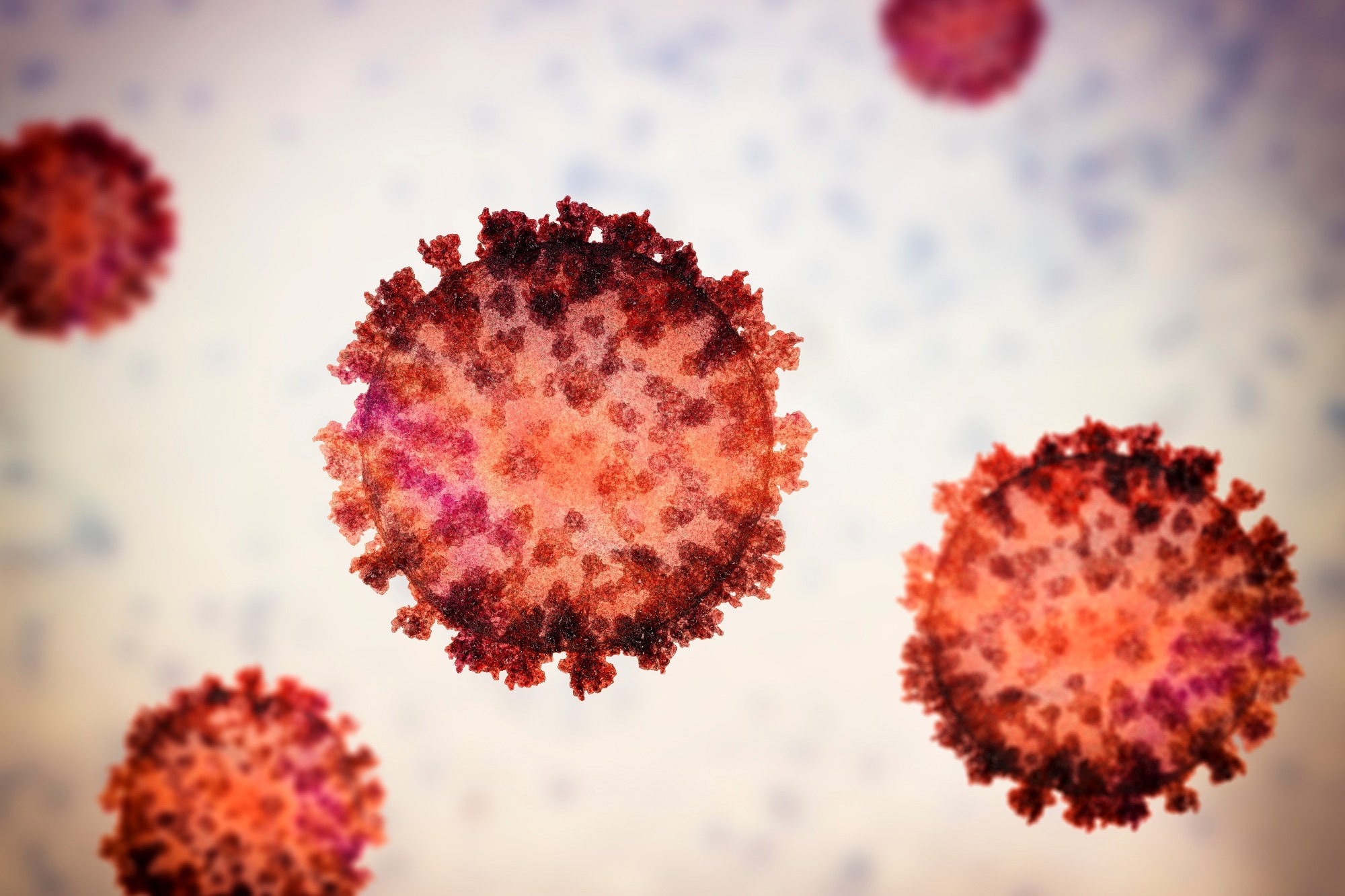A recent study published in the Science Advances Journal demonstrated that severe acute respiratory syndrome coronavirus 2 (SARS-CoV-2) infection and viral fusogens cause glial and neuronal fusion.
 Study: SARS-CoV-2 infection and viral fusogens cause neuronal and glial fusion that compromises neuronal activity. Image Credit: KaterynaKon/Shutterstock.com
Study: SARS-CoV-2 infection and viral fusogens cause neuronal and glial fusion that compromises neuronal activity. Image Credit: KaterynaKon/Shutterstock.com
Background
Fungi, bacteria, viruses, and parasites can cause nervous system infections. Viruses such as Zika virus, reovirus, SARS-CoV-2, and herpes simplex virus can infect neurons.
Viral brain infections can lead to fever, loss of smell or taste, epileptic seizures, confusion, headaches, and in severe cases, meningitis, encephalitis, paralysis, and death may occur.
In non-neuronal tissues, reoviruses and enveloped viruses use fusogens to fuse with host cellular membranes, enter cells, and hijack cellular machinery to synthesize viral components.
The newly generated fusogens redecorate the cell membrane, imparting the ability to fuse with adjacent cells, resulting in multinucleated syncytia. Whether viral infection and fusogens cause, neuronal fusion and syncytia formation remain unknown.
The study and findings
In the present study, researchers investigated whether SARS-CoV-2 infection and viral fusogens cause neuronal cell fusion. First, a population of mouse brain cells was transfected with plasmids encoding human angiotensin-converting enzyme 2 (hACE2) and green fluorescent protein (GFP).
A second population was transfected with plasmids encoding hACE2 and mCherry. These populations were co-plated and maintained in vitro for five days.
Cultures were infected with 20, 2 x 103, or 2 x 106 plaque-forming units of ancestral SARS-CoV-2. The cultures were examined 72 hours post-infection by confocal microscopy. Fused neurons were observed, and antibody staining confirmed that the cells were spike-positive. Further, the team observed additional fusion phenotypes, such as glia-glia and glia-neuron fusions.
Cell damage was observed at higher SARS-CoV-2 titers only. Next, brain organoids derived from human embryonic stem cells (hESCs) were infected with SARS-CoV-2. Likewise, these infected organoids showed neuronal syncytia.
Furthermore, to evaluate the effects of fusogens alone, the team used a SARS-CoV-2 spike and the p15 fusion protein of baboon orthoreovirus.
One population of mice neurons was transfected with p15- and GFP-expressing plasmids. Another population was transfected with a mCherry plasmid and an empty vector. The populations were co-plated and maintained in culture. p15 expression was sufficient to cause neuronal fusion, which was not observed without p15.
Using an inactive p15 completely abolished fusion. Further, the researchers repeated these experiments for the SARS-CoV-2 spike protein. One neuronal population was transfected with spike- and GFP-expressing plasmids; another was transfected with mCherry- and hACE2-expressing plasmids.
The populations were co-plated and maintained in culture for 72 hours. Fusion of cells expressing spike with hACE2-expressing cells was observed. Both hACE2 and spike were necessary for fusion. Using inactive spike versions did not induce fusion. Glia-glia and glia-neuron fusion phenotypes were observed with both p15 and spike fusogens.
Next, the team investigated whether fusogens could induce fusion in vivo. To this end, vectors expressing GFP alone or GFP and p15 were injected into the cortex and hippocampus of 11-week-old mice, and brains were removed after seven and 14 days. Neuronal fusion was detected in the cortex and the hippocampus.
They next tested in human-derived neurons with SARS-CoV-2 spike or p15. hESC-derived cortical neurons and neuronal progenitor cells were transfected with GFP and spike, inactive spike, or p15. Three days later, clusters of interconnected GFP-positive neuronal cells were evident with p15, similar to the syncytia observed in murine neurons.
Clusters were also formed when the SARS-CoV-2 spike was expressed, implying that fusion could occur by utilizing endogenous hACE2 receptors. No fusion was detected with the inactive spike or without fusogens. Next, the researchers explored whether fusion was possible at the level of neurites, away from the cell bodies.
SARS-CoV-2 infection induced fusion between somas and between neurites far away from somas. Fusion resulted in bridges of varying lengths exceeding hundreds of micrometers. The team observed the exchange of mitochondria and a fluorescent protein (mCardinal) through the fusion bridges.
Further, neurons transfected with GFP and p15 were observed for syncytia formation over seven days. Syncytia increased over time in the presence of p15, with the progressive incorporation of new cells. Finally, the researchers examined whether fusion impacted neuronal activity.
To this end, differentiated neurons were fused using p15, and fusion was visualized using a fluorescent indicator sensitive to calcium ions. Neurons expressing mCherry and empty vector had spontaneous activity. Most fused neurons (90%) showed synchronized neuronal activity, whereas the remaining showed complete loss of neuronal activity.
Cells without activity were those that fused tightly at the level of somas. All neurons fused with glia had lost activity. The frequency of the neuronal activity was unaltered, regardless of the synchronicity of fused neurons. The team also observed increased intracellular calcium ion levels within the bridges.
Conclusions
The findings demonstrated that virus-infected neurons or those expressing viral fusogens could fuse with adjacent neurons and glia, leading to changes in neuronal communication and compromising neuronal activity. Neuronal fusion by SARS-CoV-2 depends on hACE2 expression and, possibly, other accessory factors.
Fusion also resulted in the exchange of large molecules and organelles. Moreover, fused neurons were viable but with altered function and circuitry. Most existing SARS-CoV-2 vaccines, including BNT162b2, ChAdOx1, mRNA-1273, and Ad26.COV2.S are based on spike expression in host cells to elicit the immune response.
These vaccines encode the full-length spike with two mutations stabilizing the prefusion conformation and inactivating their fusogenicity. The researchers used the same version of the inactive spike in the current investigation, which failed to trigger fusion.
The findings suggest that considering the fusogenic potential will be crucial in designing future SARS-CoV-2 vaccines.